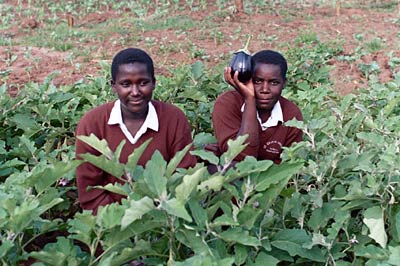I may be wrong but after yesterdays frustration I am coming to the realisation that maybe there is an enabling level of adherents. That is maybe there is a threshold of the number adherents to a religion reached before they take on “side issues”. But it also could be an access to technology issue. Maybe the ATR’s don’t have easy access to the web. Whatever the reason I found not one (bumpkis, nada, zero zilch) African Traditional Religious groups involved in Environmentalism. If I strike out today, I may be done with religion for now.
Sikhism (IPA: /?si?k?z?m/ or /?s?k-/ ; Punjabi: ?????, sikkh?, IPA: [?s?kk?i?] ), founded on the teachings of Nanak and nine successive gurus in fifteenth century Northern India, is the fifth-largest religion in the world.[1] This system of religious philosophy and expression has been traditionally known as the Gurmat (literally the counsel of the gurus) or the Sikh Dharma. Sikhism originated from the word Sikh, which in turn comes from the Sanskrit root ?i?ya meaning “disciple” or “learner”, or ?ik?a meaning “instruction.”[2][3]
The principal belief of Sikhism is faith in V?higur?—represented using the sacred symbol of ?k ?a?k?r, the Universal God. Sikhism advocates the pursuit of salvation through disciplined, personal meditation on the name and message of God. A key distinctive feature of Sikhism is a non-anthropomorphic concept of God, to the extent that one can interpret God as the Universe itself. The followers of Sikhism are ordained to follow the teachings of the ten Sikh gurus, or enlightened leaders, as well as the holy scripture entitled the Gur? Granth S?hib, which includes selected works of many devotees from diverse socio-economic and religious backgrounds. The text was decreed by Gobind Singh, the tenth guru, as the final guru of the Khalsa Panth. Sikhism’s traditions and teachings are distinctively associated with the history, society and culture of the Punjab. Adherents of Sikhism are known as Sikhs (students or disciples) and number over 23 million across the world. Most Sikhs live in the state of Punjab in India and, prior to the country’s partition, millions of Sikhs lived in what is now known as the Punjab province of Pakistan
Then again maybe I was wrong. I found this neat site and it lists Jains and the B’hai as well so I will be at it for a couple of days at least.
http://www.arcworld.org/faiths.asp?pageID=57
But first the Pretty Pictures
-
C.P.R Environmental Education Centre – set up to increase consciousness and knowledge about the environment.
Gender Prediction – predicts unborn child’s gender
Journal of Indian Bird Records and Conservation – provides periodic information on Indian birds, conservation etc.
SEWAA – organisation responding to the worsening conditions of the environment.
Sarasvati River – includes information on projects to develop the Sarasvati River Basin.
The Worm Man – operates worm farms to produce organic chemicals & to support charity
- A.P.E. – The Association for the Preservation of the Environment
Beauty Without Cruelty – charitable organisation for animal rights in India
Centre for Human Ecology, Mumbai – environmental education in India
Chilika Development Authority – preservation of the natural eco-system of Chilika lake
Conservator of Forests – supervises wildlife management works in protected areas of Nagpur, Wardha
Friends of the Narmada – information on the Narmada movement
Indian Wildlife Club – a forum to share the beauty & wonder of Indian wildlife
Internet Tiger Activists – group of people dedicated to the cause of saving the tiger from extinction
The Gir Forest, Gujarat – reserve & natural habitat of the Asiatic lions
Vatavaran – working on environmental issues.
World Wide Fund for Nature (WWF), India – organisation for nature conservation & environmental protection
- Central Pollution Control Board, Delhi
Environ Engineering Company – effluent treatment machinery manufacturers & environmental engineers
Way to go Punjabians.!.
Realisation of Truth and Truthful Living for all.
>
















